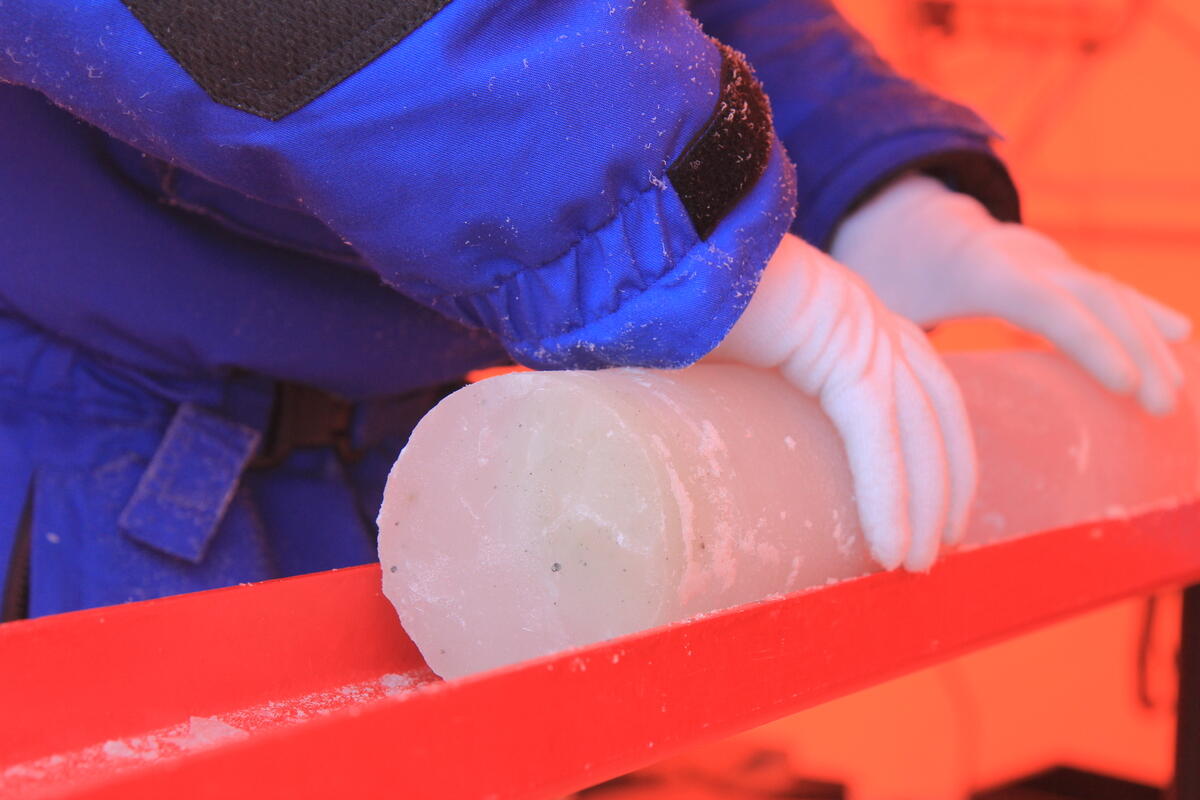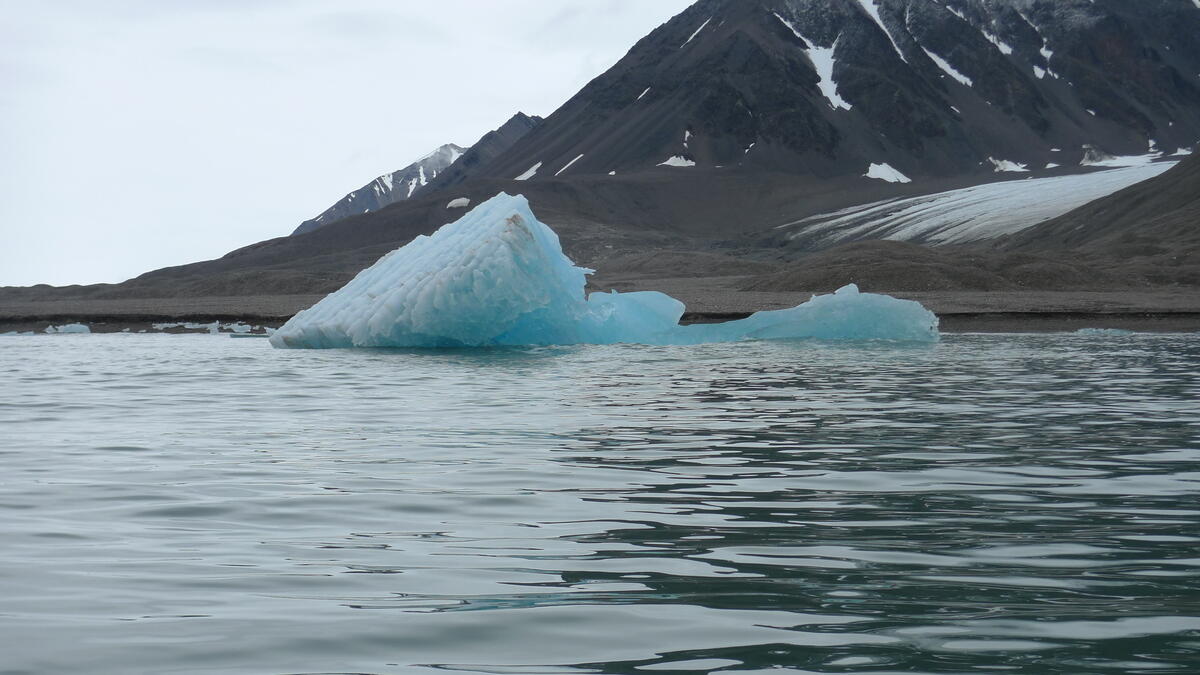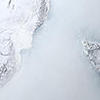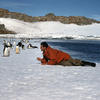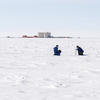You are here
Saving the ice record in Svalbard's glaciers
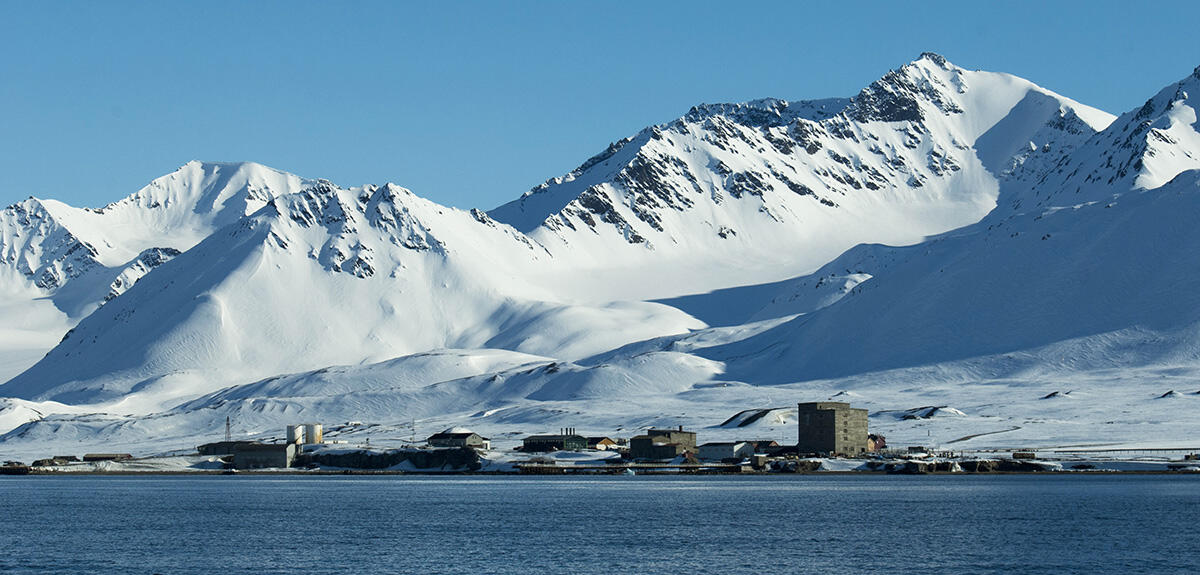
Pioneering glaciologist Claude Lorius, who died on 21 March, 2023 at the age of 91, was one of the first to study the climate of the past as recorded in the air bubbles trapped in ice cores. Now, with the planet's glaciers melting due to accelerating climate change, other scientists are racing to save these records before it's too late.
“We're a bit like the Franciscan friar William of Baskerville, in The Name of the Rose,1 who tries to save a handful of books from a burning library,” confides Jérôme Chappellaz,2 Chair of the Ice Memory Foundation,3 which aims to preserve ice cores from glaciers that hold records of past environments and climates. These will be stored in The Ice Memory Sanctuary, whose construction is scheduled in 2024-2025 near the French-Italian Concordia Research Station, in the Antarctic interior some 1100 kilometres from the sea.
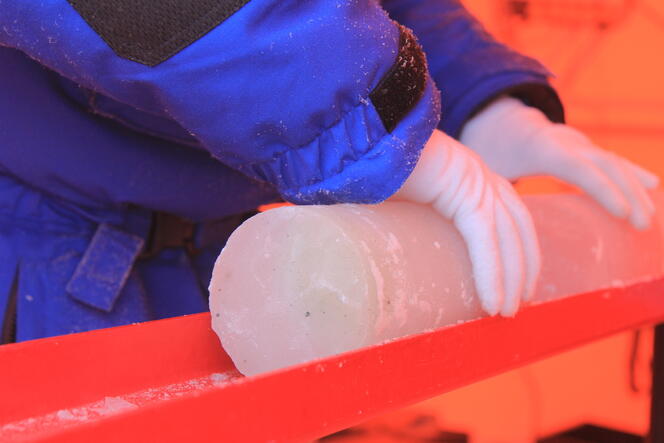
The Sanctuary will be located at an altitude of 3200 metres, and will consist of a cave dug into the ice to a depth of 10 metres covered by an arch made of tilled snow, in which ice cores from around the world will be stored. “This ice-core library for future generations” will be located in “the world's most effective freezer”, Chappellaz points out. At the surface, the average temperature is -55 °C, rising to a mere -20 °C at the height of summer.
A collection of “heritage ice cores”
The project to safeguard the world's glacial heritage started in the Mont-Blanc massif, in the Alps, with an operation performed in August 2016 by an international team of glaciologists and engineers from France, Italy, Russia and the US, who collected the first three 128-metre-long “heritage ice cores” from the Col du Dome pass, at an altitude of 4300 metres above sea level. Then in 2017, under the operational responsibility of Patrick Ginot, an engineer at the French National Research Institute for Sustainable Development (IRD), 60 porters and high mountain guides transported the equipment needed to collect two cores measuring 134 and 137 metres, respectively, from the Nevado Illimani in the Bolivian Andes, at an altitude of 6300 metres. They then had to carry down, in addition to their own material, 1.5 tonnes of ice representing some 18,000 years' worth of climate and environmental records.
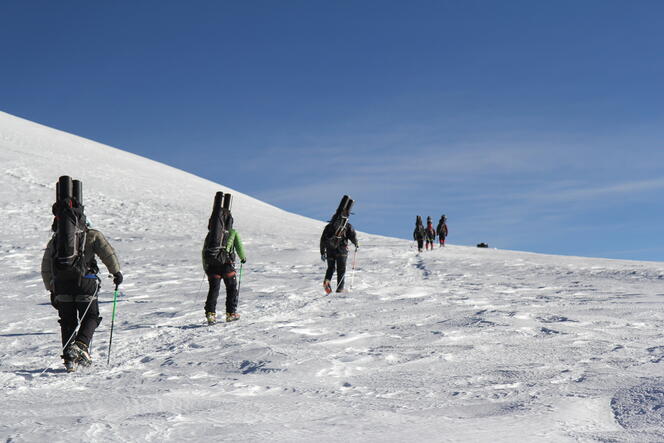


In 2018, Swiss and Russian researchers drilled two ice cores on the highest peak in Russia's Altai Mountains, Mount Belukha (4500 m), located in Siberia's Katun Range on the border with Kazakhstan. On Mount Elbrus in the Russian Caucasus, Europe's highest peak (5642 m), Russian glaciologists taking part in the Ice Memory initiative were forced to halt their operations at a shallower depth than expected, due to a thick layer of volcanic ash within the glacier.
In 2021, two ice cores were brought back from the Colle Gnifetti glacier (4500 m), in the Monte Rosa massif on the Swiss-Italian border. And some material, down to a depth of 25 metres, was also saved from Europe's southernmost glacier, the Calderone, in the Italian Apennines. In September 2020, a survey of the Grand-Combin summit, on the Italian-Swiss border, showed that it was “high time to take action”, Chappellaz says. “We were only able to drill down 25 metres into the ice, since we encountered water deeper in the glacier. We got there too late.”
Drilling back 300 years of environmental history
At a time when preserving this endangered global record is a matter of growing urgency, eight scientists are preparing to set up their ice-core camp in the last two weeks of April 2023 at the top of the Holtedahlfonna glacier, at an altitude of 1150 m in the Norwegian archipelago of Svalbard, and 40 kilometres from the international scientific research village of Ny-Ålesund.
If everything goes according to plan, they will use an electromechanical core drill to collect two Arctic ice cores 10 centimetres in diameter, from the surface of the glacier right down to the bedrock, at a depth of some 125 metres, representing environmental records dating back to the 1700s. “Although Svalbard's glaciers are already experiencing accelerated summer melting at the surface, ice cores from Holtedahlfonna are still well-enough preserved to be used for studies on the past climate. However, it is clear that we must take immediate action,” says Catherine Larose, a microbiologist from the Laboratoire Ampère4 at the Ecole Centrale de Lyon, who is taking part in the French-Italian polar expedition.
The team plans to process some 100 to 120 ice samples at the top of the ice cap, 10 cubic metres in all, before bringing them back by snowmobile to base camp in Ny Ålesund, and then to mainland Europe with logistical assistance from the French Polar Institute Paul-Émile Victor.5

Today, the Svalbard archipelago, a land of ice and polar bears halfway between mainland Norway and the North Pole, is experiencing extreme climate change, as are all the eastern coastal regions of the North Atlantic and Greenland, which are warming about three times faster than the rest of the planet, possibly by 4 °C to 5 °C over the next 50 years. Paradoxically, this part of the globe is also contributing to accelerate climate change, as its sea ice is melting, thus raising sea levels, and, more importantly, becoming scarcer. “The retreat of sea ice in the Arctic, particularly in the Barents Sea and Fram Strait, impacts heat exchanges between the sea surface and the atmosphere,” Larose explains. “These could in turn affect the biogeochemical bromine and mercury cycles, as well as the lifetime of ozone in the atmosphere.”
A programme to study ice microorganisms
With the SENTINEL programme,6 which ultimately aims to study the consequences of the disappearance of sea ice on climate and biogeochemical cycles in the upper North Atlantic, air bubbles aren't the only thing the researchers are focusing on. Over the past ten years they have developed new research methods, including genome sequencing of ice microorganisms, with the aim of better understanding how such organisms are connected to changes in environmental conditions and how they can be used as sentinels to measure the impact of these changes.
“Arctic snow has long been thought of as a huge inert freezer,” says Larose. “And yet it is very much a living environment, full of microorganisms such as yeasts, fungi, microalgae, bacteria and archaea.” However, before being deposited on glaciers around the world by snow and rainfall, these microorganisms, which originate in marine and terrestrial environments, are transported through the atmosphere, sometimes over thousands of kilometres.
“Through work I did for my PhD thesis and postdoctoral research, my group and I have shown that, once deposited, these microorganisms can survive in the snow and interact with their environment,” the microbiologist explains. As the layers of snow turn into ice, the microorganisms “appear to survive, with highly reduced metabolic activity”. As a result, the ice “produces a stratigraphic record of the conditions they were living in before they were trapped”. Today, researchers not only benefit from advances in sequencing technologies, but also combine several disciplines such as advanced chemical analysis, snow physics, innovative microbiology and molecular ecology to describe how ecosystems function in environments such as Arctic snowpacks.
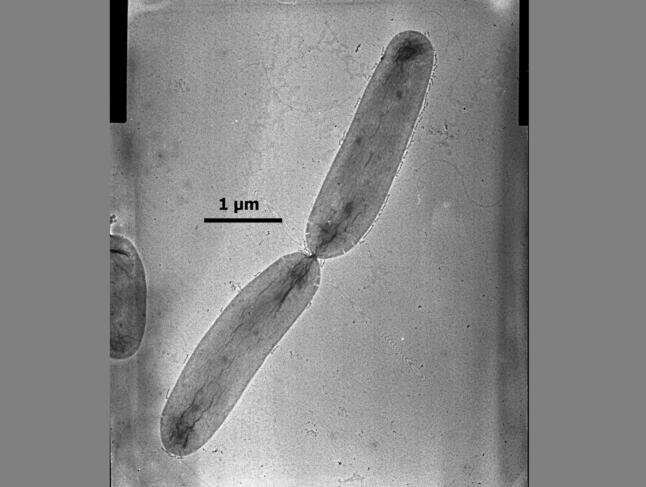


The study of microbial genomes is revealing a wealth of information about the response of living organisms to changes in their ecosystem, such as the resistance of microorganisms trapped in ice to organic pollutants, to black carbon and to pollution, for example by mercury. “Through our collaboration with the international ice core community and cryosphere chemistry experts, we are now in a unique position to access new data and provide fundamental information about the evolution of our planet,” Larose concludes.
- 1. Crime novel by Umberto Eco, whose plot takes place in a Benedictine abbey in 1327. Published in 1980, it was adapted for the screen by Jean-Jacques Annaud in 1986.
- 2. CNRS research professor and professor at the EPFL in Lausanne (Switzerland), former head of the French Polar Institute Paul-Émile Victor, and Chair of the Ice Memory Foundation.
- 3. The Ice Memory Foundation was set up in 2021 by seven founding members: the French National Centre for Scientific Research (CNRS, France), Université Grenoble-Alpes (France), the Paul Scherrer Institute (Switzerland), the Ca'Foscari University of Venice (Italy), the French National Research Institute for Sustainable Development (IRD, France), the National Research Council of Italy (CNR, Italy) and the French Polar Institute Paul-Émile-Victor (IPEV). It is under the aegis of Université Grenoble-Alpes.
- 4. CNRS researcher in the Environmental Microbial Genomics Group, at the Laboratoire Ampère (CNRS / Centrale Lyon / Insa Lyon / Université Claude-Bernard Lyon 1).
- 5. The expedition, led by the Institute of Polar Sciences of the National Research Council of Italy (CNR), involves scientists from the CNRS, the Norwegian Polar Institute (NPI), the Ca' Foscari University of Venice, and the Università degli Studi di Perugia.
- 6. The acronym SENTINEL, literally “the impact of sea ice diSappearance on highEr North aTlantic clImate and atmospheric bromiNe and mErcury cycLes”, refers to the study of the impact of sea ice loss on climate and biogeochemical cycles (bromine and mercury) in the upper North Atlantic.
Explore more
Author
Working at the daily Ouest-France since 2003, Gaël Hautemulle is in charge of sea-related content for the Brest-based editorial office.


